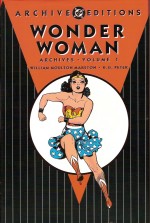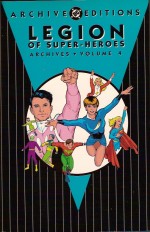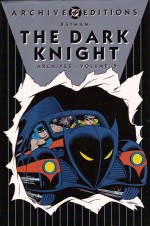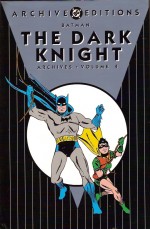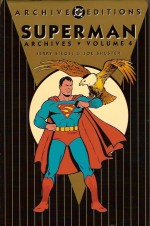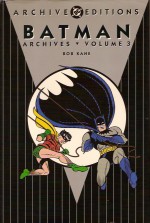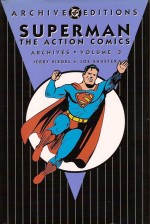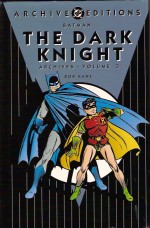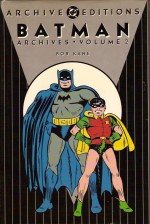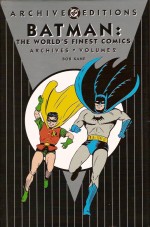
By Bob Kane, Bill Finger, Don Cameron, Joe Samachson, Norman Fallon, Dick Sprang, Win Mortimer, Ray Burnley, & various (DC Comics)
ISBN: 1-4012-0163-6
The creation of Superman propelled National Comics to the forefront of their fledgling industry and in 1939 the company was licensed to produce a commemorative comicbook celebrating the start of the New York World’s Fair, with the Man of Tomorrow prominently featured among the four-colour stars of the appropriately titled New York World’s Fair Comics.
A year later, following the birth of Batman and Robin, National combined Dark Knight, Boy Wonder and Man of Steel on the cover of the follow-up New York World’s Fair 1940. The spectacular 96 page anthology was a huge hit and the format was retained as the Spring 1941 World’s Best Comics #1, before finally settling on the now legendary title World’s Finest Comics from #2, beginning a stellar 45-year run which only ended as part of the massive clear-out and de-cluttering exercise that was Crisis on Infinite Earths.
Until 1954 and the swingeing axe-blows of rising print costs, the only place Superman and Batman ever met was on the stunning covers by the likes of Jack Burnley, Fred Ray and others. Between those sturdy card covers, the heroes maintained a strict non-collaboration policy…
This second glorious deluxe hardback dedicated to the Gotham Gangbusters’ early appearances reprints the Batman tales from World’s Finest Comics #17-32 (Spring 1945 – January/February 1948), in gleaming, glossy full-colour and also includes a fascinating Foreword by author and fan Bill Schelly and concludes with brief biographies of all the creators involved in these early masterpieces.
In between those text titbits there is unbridled graphic enchantment beginning with ‘Crime Goes to College’ by Bill Finger, Norman Fallon & Dick Sprang, wherein the Dynamic Duo tracked down a cracked academic determined to prove that he could make crime pay whilst ‘Specialists in Crime’ scripted by Don Cameron, pitted the heroes against a wily team who seemed to have the right man for every job they pulled…
In #19 the Joker organised ‘The League for Larceny’ (Joe Samachson, Bob Kane & Ray Burnley) to promote the finer points of criminality until Batman and Robin stepped in whilst in #20 (Winter 1946, and the last quarterly edition: from the next issue the comicbook would appear every two months) benign numismatist Mark Medalion turned out to have a very sinister other face as ‘The King of Coins’, a clever and exotic thriller from Cameron & Win Mortimer.
WF #21 (March/April 1946, illustrated by Mortimer and the uncredited writer is probably Cameron) introduced ‘Crime’s Cameraman’ Sam Garth, a keen shutterbug whose unwitting enthusiasm masked a deadly secret, whilst ‘A Tree Grows in Gotham City’ (written by Alvin Schwartz?) spoofed the infamous novel by pitting the Dynamic Duo against a gang of thugs determined to dig up an elderly oak belonging to an equally elderly gent… but why?
‘Champions Don’t Brag’ (William Woolfolk & Mortimer) focussed on Dick Grayson’s understandable desire to excel at sports: a wish constantly thwarted by the need to keep his Robin alter ego secret. When his school’s best athlete was kidnapped the fear proved justified since the abductors then tried to ransom the “Boy Wonder†they sincerely believed they had captured…!
The unknown writer of ‘The Case of the Valuable Orphans’ told a powerful tale of cruel criminality as thugs exploited carefully placed adopted children to case potential burglary jobs, whilst ‘The Famous First Crimes’ by Cameron, Mortimer & Howard Sherman in #25, found Batman and Robin helping an enterprising inventor whilst battling bandits determined to steal historical scientific breakthroughs and ‘His Highness, Prince Robin’ (by anonymous & Mortimer) saw the Boy Wonder pinch-hitting for a wayward royal absconder in a clever twist on the classic Prince and the Pauper plot.
In WF #27 ‘Me, Outlaw’ revealed the big mistake of car thief and murderer Wheels Mitchum in a tense and salutary courtroom drama by Finger & Jim Mooney, whilst ‘Crime Under Glass’ depicted the horrific and grisly murder spree of the chilling Glass Man in a taut mystery illustrated by Sprang by Fallon and #29 offered ‘The Second Chance’ to freshly released convict Joel Benson who increasingly found life out of prison temptation beyond endurance in a classy human drama by Cameron & Mortimer.
Most later Batman tales feature a giant coin in the Batcave and World’s Finest #30 is where that spectacular prop first appeared; spoils of a successful battle between the Caped Crusaders and the vicious gang of Joe Coyne and ‘The Penny Plunderers!’ (Finger, Kane & Burnley), after which ‘The Man with the X-Ray Eyes!’ (scripted by Cameron) saw the heroes struggling to save from unscrupulous thugs a tragic artist cursed with the ability to see through anything – including their masks…
This superb collection of Dark Knight Dramas ends with ‘The Man Who Could Not Die’ (Finger, Kane & Burnley from #32) a deliciously fearsome fable wherein petty gunman Joe “Lucky†Starr got a twisted horoscope reading and believed that he knew the day he would be killed. Of course, until then, he could commit any crime without possibility of harm – even if Batman and Robin interfered…
These spectacular yarns provide a perfect snapshot of the Batman’s amazing development from bleak moody avenger and vigilante agent of revenge to dedicated, sophisticated Devil-may-care Detective in timeless tales which have never lost their edge or their power to enthral and beguile, and this superbly sturdy Archive Edition is indubitably the most luxurious and satisfying of ways to enjoy them over and over again.
So why don’t you…
© 1945, 1946, 1947, 1948, 2004 DC Comics. All Rights Reserved.

